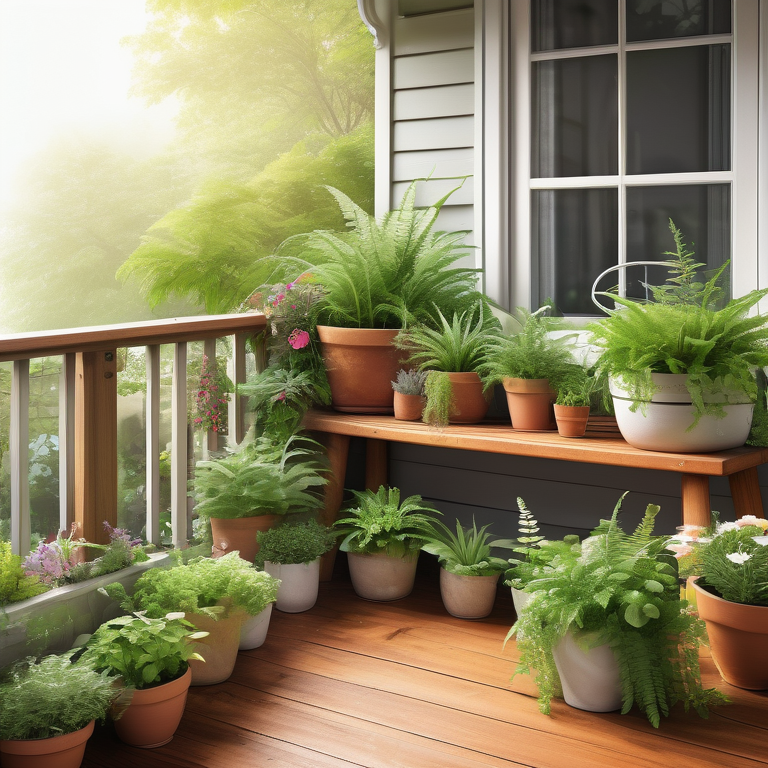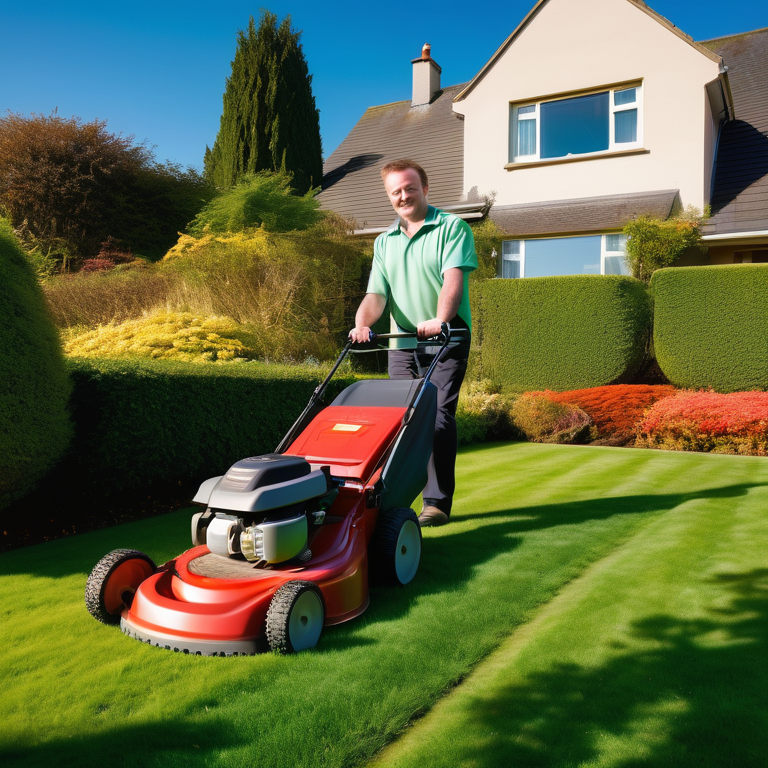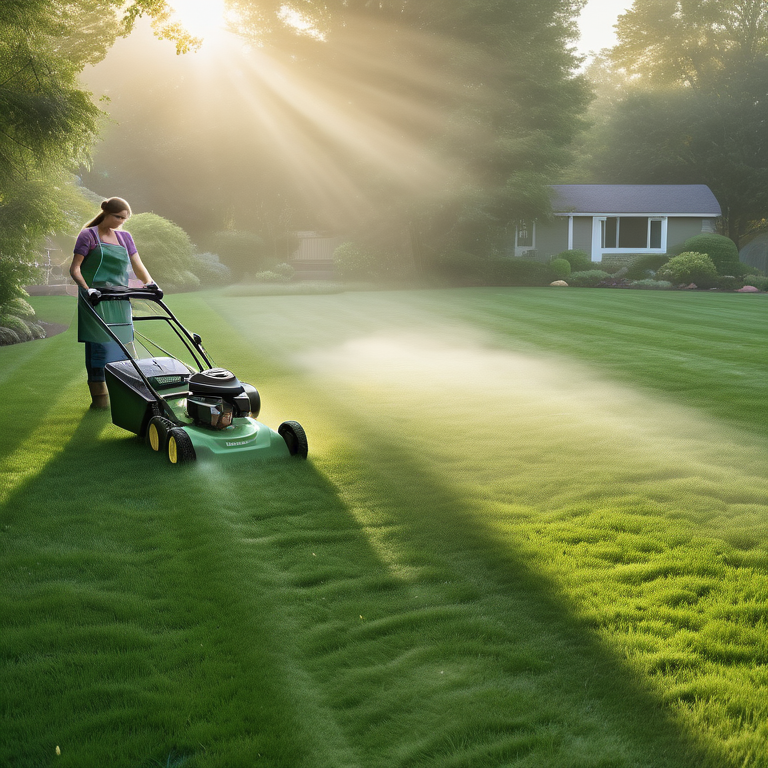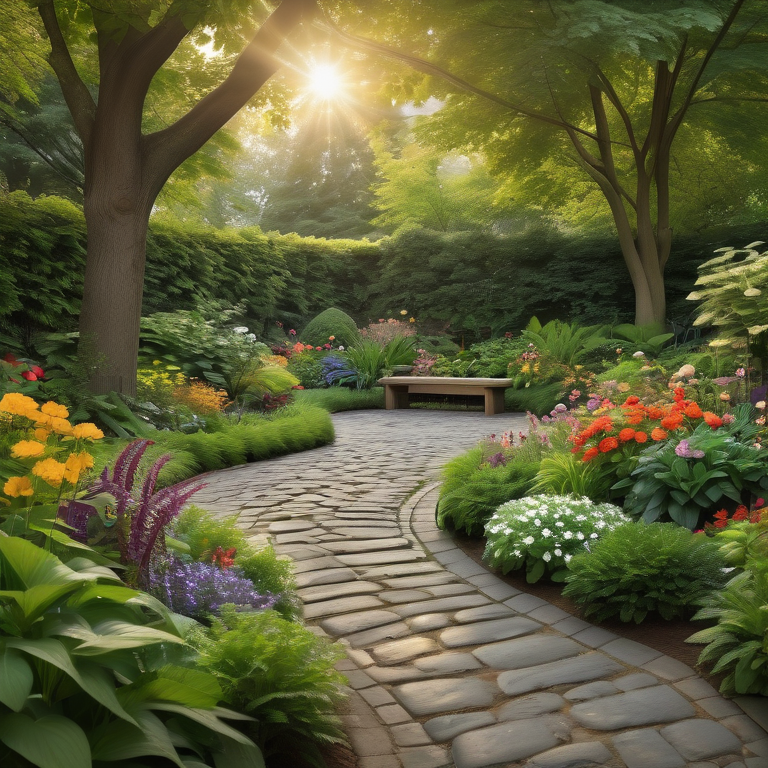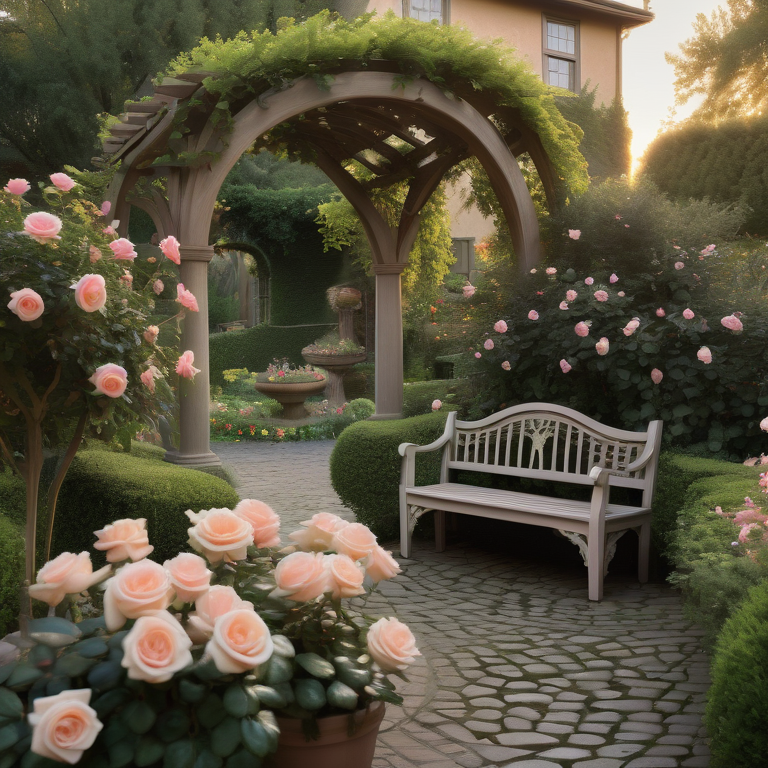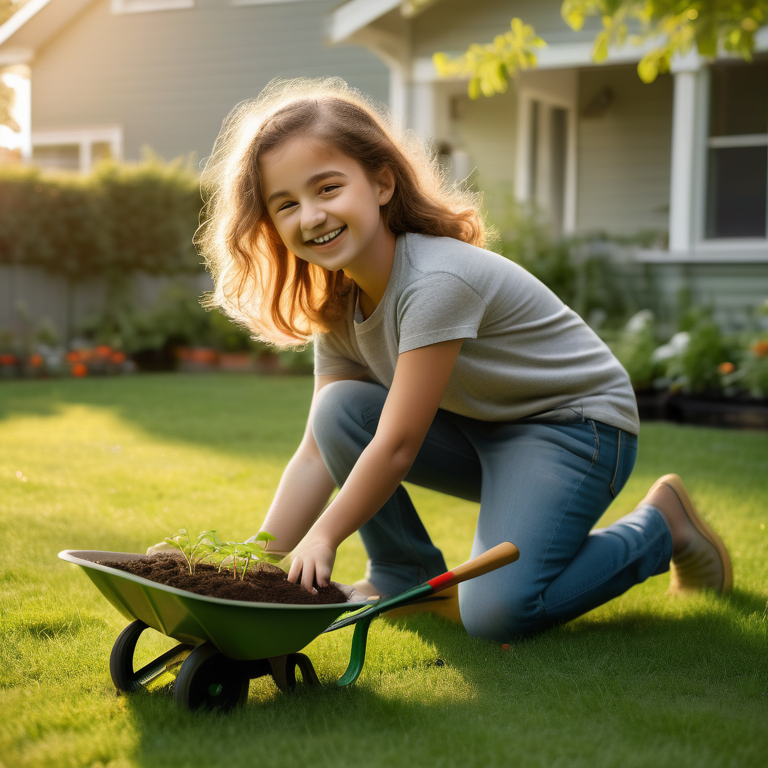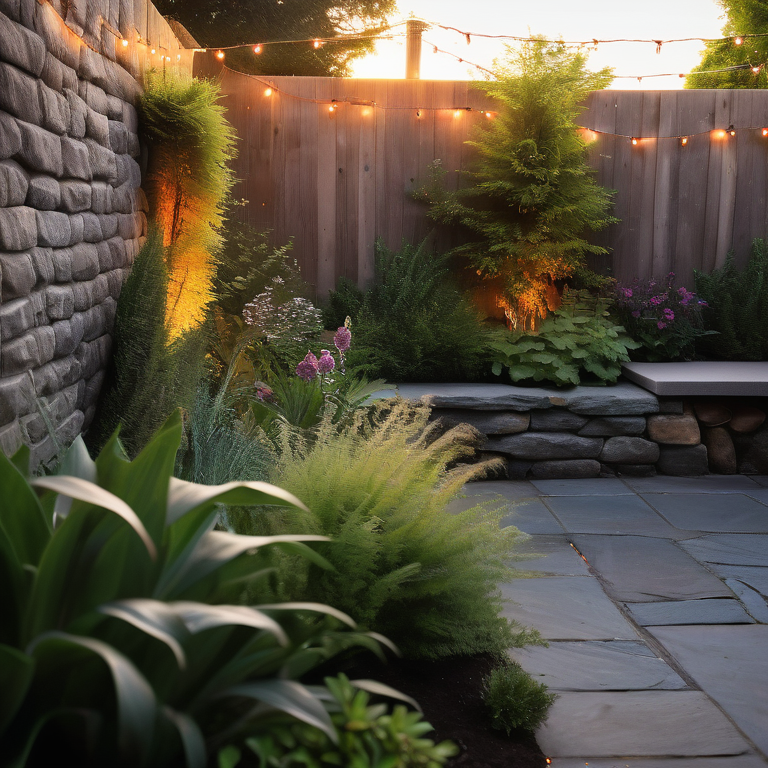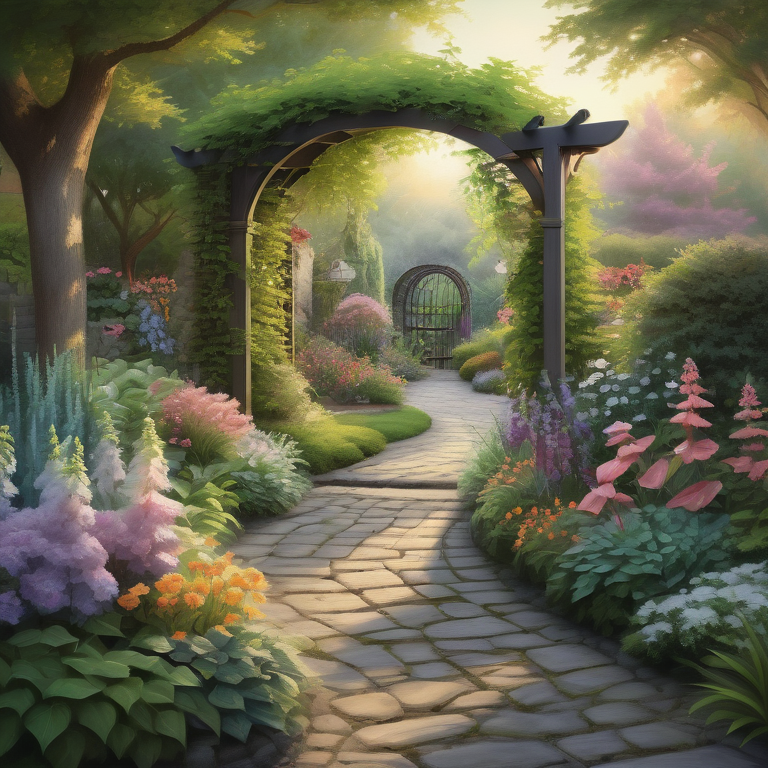Key Highlights
- Container gardening is a great way to add instant color and beauty to your outdoor space.
- You can create beautiful container gardens by selecting the right containers, choosing complementary plants, and incorporating elements like hanging baskets and wall planters.
- Edible plants and drought-resistant succulents are excellent choices for container gardens.
- Designing for seasonal changes and attracting pollinators to your garden are important considerations.
- You can enhance your container garden by using recycled materials, adding lighting and water features, and experimenting with exotic and tropical plants.
Introduction
Container gardening is a popular and versatile way to bring beauty and greenery to your outdoor space. Whether you have a small balcony, a spacious patio, or a bare corner in your backyard, container gardens can instantly transform these areas into vibrant and inviting spaces. The great thing about container gardening is that it allows you to plant a variety of flowers, herbs, and even vegetables, regardless of the size or condition of your outdoor space. With the right containers, plants, and design techniques, you can create stunning and functional container gardens that will thrive and bring joy throughout the year.
In this ultimate container garden design guide, we will explore the essential elements of container garden design and provide you with creative ideas to enhance your container garden. We will also discuss common challenges and provide solutions to help you overcome them. Whether you’re a beginner or an experienced gardener, this guide will provide you with valuable tips and insights to create beautiful and thriving container gardens that will be the envy of your neighborhood.
Essential Elements of Container Garden Design
Container gardening is more than just placing plants in pots. To create a visually appealing and cohesive container garden, there are a few essential elements to consider. First, think about the overall design of your garden and how your container garden will fit into it. Consider factors such as the color scheme and style of your garden. Next, choose the right containers that complement your outdoor space. Finally, select plants that thrive in your specific growing conditions, whether it’s a sunny spot or a shady area. By paying attention to these essential elements, you can create a container garden that is both aesthetically pleasing and functional. www.wicklowlandscaping.ie
1. Selecting the Right Containers for Your Space
Choosing the right containers is crucial for the success of your container garden. Consider the size and style of your outdoor space when selecting containers. If you have a small balcony, opt for compact containers that don’t take up too much space. If you have a larger patio or backyard, you can go for bigger and more decorative containers to make a bold statement.
In addition to size, consider the material of the containers. Terracotta pots are a popular choice as they are durable and provide good drainage. They also add a touch of elegance to any garden. However, keep in mind that terracotta pots can dry out quickly, so frequent watering may be necessary. Other options include plastic, fiberglass, and ceramic containers, which are lightweight and come in a variety of styles and colors. Choose containers that complement your outdoor space and personal style to create a cohesive and visually appealing container garden.
2. Combining Plants with Complementary Colors and Textures
One of the key elements of a successful container garden design is the combination of plants with complementary colors and textures. To create a visually appealing container garden, consider the color scheme of your outdoor space and choose plants that complement it. For example, if you have a garden with a cool color palette, such as blues and purples, consider planting flowers with similar hues, like lavender or salvia. On the other hand, if your garden has warm tones, such as reds and oranges, opt for plants like marigolds or zinnias.
In addition to color, consider the textures of the plants you choose. Mix plants with different leaf shapes and textures to create visual interest. For example, combine feathery foliage plants like ferns with plants that have bold, broad leaves like hostas. Also, consider the height of the plants and arrange them in a way that creates a pleasing composition. Place taller plants at the back or center of the container and shorter plants towards the front or edges. This arrangement will create depth and dimension in your container garden and ensure that all plants are visible and well-balanced. www.wicklowlandscaping.ie
3. Maximizing Vertical Space with Hanging Baskets and Wall Planters
If you have limited horizontal space in your outdoor area, consider maximizing vertical space by using hanging baskets and wall planters. Hanging baskets are a great way to add beauty and greenery to any space. They can be hung from hooks, pergolas, or even tree branches, creating a stunning display of flowers or trailing vines. Hanging baskets are particularly useful for small balconies or patios where floor space is limited.
Wall planters are another clever way to maximize vertical space. These planters can be attached to walls, fences, or even freestanding frames, allowing you to create a living wall of plants. Wall planters are especially popular for growing herbs or small vegetables in urban environments. They not only save space but also add a unique and eye-catching element to your outdoor space. By incorporating hanging baskets and wall planters into your container garden design, you can create a lush and vibrant display even in the smallest of spaces. www.wicklowlandscaping.ie
4. Incorporating Edible Plants for a Functional Garden
Container gardening is not just limited to flowers and ornamental plants. It’s also a great way to grow your own food and create a functional garden. Incorporating edible plants into your container garden can not only provide fresh produce but also add variety and interest to your outdoor space.
There are many edible plants that thrive in containers, such as strawberries, herbs, and even small vegetables. Strawberries, for example, are well-suited to container gardening as they have shallow roots and can be grown in hanging baskets or tall planters. Herbs like basil and rosemary are also great choices for container gardens. They can be grown in small pots on a sunny windowsill or a balcony, providing you with fresh herbs for cooking throughout the season. Experiment with different edible plants and container garden ideas to create a functional and beautiful garden that satisfies both your taste buds and your green thumb.
5. Utilizing Drought-Resistant Succulents for Easy Maintenance
If you’re looking for an easy and low-maintenance way to add greenery to your outdoor space, consider utilizing drought-resistant succulents in your container garden. Succulents are known for their ability to store water in their fleshy leaves, making them highly tolerant to drought conditions. This makes them the perfect choice for busy gardeners or those who live in dry climates.
Succulents come in a variety of shapes, sizes, and colors, allowing you to create a visually striking container garden. From the popular and hardy aloe vera to the delicate and vibrant echeverias, there are succulents to suit every taste and style. When planting succulents, make sure to provide them with good drainage by using a well-draining potting mix and adding gravel or sand to the bottom of the container. This will prevent water from pooling and causing root rot. With minimal watering and occasional fertilizing, your succulent container garden will thrive and bring beauty to your outdoor space with little effort. www.wicklowlandscaping.ie
6. Designing for Seasonal Changes and Year-Round Interest
Designing your container garden to account for seasonal changes is essential for maintaining year-round interest and beauty in your outdoor space. Consider the changing weather and growing conditions throughout the year and choose plants that will thrive in each season.
In the spring and early summer, opt for plants that bloom during this time, such as tulips or daffodils. These vibrant flowers will bring a burst of color to your garden and signify the arrival of the warmer months. As the seasons transition into summer, choose plants that can withstand full sun and heat, such as marigolds or petunias. In the autumn, select plants with foliage that turns vibrant shades of red, orange, or yellow, like ornamental grasses or Japanese maples. By carefully selecting plants that bloom and thrive during different seasons, you can ensure that your container garden remains visually appealing and interesting throughout the year.
7. Choosing Plants That Attract Pollinators
Creating a container garden that attracts pollinators is not only beneficial for the environment but also adds an additional layer of beauty to your outdoor space. Pollinators such as bees, butterflies, and hummingbirds play a vital role in the pollination of plants, helping them reproduce and produce fruit or seeds.
To attract pollinators to your container garden, choose plants that are known to be pollinator-friendly. Flowers with bright colors and a rich source of nectar are particularly attractive to pollinators. Some popular choices include lavender, zinnias, salvias, and coneflowers. It’s also important to provide a variety of flowers that bloom at different times throughout the growing season to ensure a continuous food source for pollinators. By incorporating pollinator-friendly plants into your container garden, you’ll not only create a beautiful and vibrant space but also contribute to the well-being of these important creatures. www.wicklowlandscaping.ie
8. Experimenting with Exotic and Tropical Plants in Pots
If you want to create a unique and tropical oasis in your outdoor space, consider experimenting with exotic and tropical plants in pots. Exotic plants like palms, bird of paradise, or hibiscus can add a touch of the tropics to your container garden, even if you live in a colder climate.
When choosing exotic and tropical plants, keep in mind their specific growing requirements. Most tropical plants thrive in warm and humid environments, so it’s important to provide them with the right conditions. Place your containers in a sunny spot with partial shade to mimic the dappled sunlight of a tropical rainforest. Additionally, make sure to choose pots with good drainage and use a well-draining potting mix to avoid waterlogged roots. By experimenting with exotic and tropical plants in your container garden, you can create a lush and tropical paradise right in your own backyard.
Key Takeaways on Container Garden Design
- Container gardening is a versatile and creative way to bring beauty and greenery to any outdoor space.
- Selecting the right containers, choosing plants with complementary colors and textures, and utilizing vertical space are essential elements of container garden design.
- Incorporating edible plants and drought-resistant succulents adds functionality and low-maintenance options to your container garden.
- Designing for seasonal changes and attracting pollinators are important considerations for year-round interest and ecological impact.
- Experimenting with exotic and tropical plants can create a unique and tropical oasis in your container garden. www.wicklowlandscaping.ie
Clearly Define Your Garden’s Purpose and Theme
Before you start designing your container garden, it’s important to clearly define its purpose and theme. Are you looking to create a vibrant and colorful flower display? Or do you want to grow herbs and vegetables for culinary purposes? Defining the purpose of your container garden will help you choose the right plants and containers that align with your vision.
Additionally, consider creating a focal point or centerpiece in your container garden. This can be a tall and dramatic plant, a unique container, or a decorative element such as a sculpture or fountain. A focal point adds visual interest and serves as a centerpiece around which you can arrange your other plants. By clearly defining your garden’s purpose and incorporating a focal point, you can create a container garden that is cohesive and visually appealing.
Understand the Importance of Soil and Drainage
The quality of the soil and the drainage in your containers are crucial factors in the success of your container garden. Good soil provides the necessary nutrients for your plants to thrive, while proper drainage prevents waterlogging and root rot.
When choosing soil for your container garden, opt for a high-quality potting mix that is specifically formulated for container gardening. Avoid using garden soil, as it can be too heavy and may not provide sufficient drainage. To improve drainage, add a layer of gravel or small rocks to the bottom of your containers before adding soil. This will help excess water to drain away from the roots of your plants.
In addition to soil, consider adding compost or organic fertilizer to your containers to provide an extra boost of nutrients. This will help your plants grow and bloom to their full potential. By understanding the importance of soil and drainage in your container garden, you can ensure that your plants have the best growing conditions for optimal health and beauty. www.wicklowlandscaping.ie
Regular Maintenance Tips for Thriving Container Gardens
Regular maintenance is essential for keeping your container garden healthy and thriving. Here are some tips to help you maintain your container garden:
- Water your container plants regularly, taking into account the specific needs of each plant. Check the soil moisture level by sticking your finger about an inch into the soil. If it feels dry, it’s time to water. Be mindful of overwatering, as it can lead to root rot. Consider using self-watering containers or installing an automatic watering system for convenience.
- Fertilize your container plants regularly to provide them with the necessary nutrients. Use a slow-release fertilizer or water-soluble fertilizer according to the package instructions.
- Prune and deadhead your plants as needed to promote new growth and remove any diseased or damaged parts.
- Monitor your plants for pests and diseases and take appropriate action to prevent or treat them. This may include using organic pest control methods or removing affected plants.
By following these maintenance tips, you can ensure that your container garden remains healthy, vibrant, and enjoyable throughout the growing season. www.wicklowlandscaping.ie
Creative Ideas to Enhance Your Container Garden
To take your container garden to the next level, consider incorporating creative ideas to enhance its beauty and functionality. Here are a few creative ideas to inspire you:
- Use recycled materials such as old buckets, tires, or pallets to create unique and eco-friendly containers for your plants.
- Add lighting to your container garden to create a magical ambiance in the evening. Consider using string lights, lanterns, or solar-powered LED lights to illuminate your plants and create a cozy atmosphere.
- Incorporate water features such as fountains or small ponds into your container garden to add a sense of tranquility and relaxation.
By incorporating these creative ideas into your container garden, you can create a unique and personalized outdoor space that reflects your style and enhances the beauty of your plants.
Using Recycled Materials for Unique Containers
Using recycled materials to create unique containers for your plants is not only a creative way to enhance your container garden but also an eco-friendly choice. Instead of buying new containers, consider repurposing items you already have or sourcing materials from thrift stores or flea markets.
You can use old buckets, tin cans, or wooden crates as planters. Consider painting them in vibrant colors or distressing them for a rustic look. Old tires can be stacked and filled with soil to create a unique vertical planter. Pallets can be transformed into planters by attaching small pots or boxes to the slats.
By using recycled materials for your containers, you not only add a touch of creativity and uniqueness to your container garden but also contribute to reducing waste and protecting the environment. www.wicklowlandscaping.ie
Lighting Ideas to Highlight Your Garden at Night
Adding lighting to your container garden is a great to highlight its beauty and create a magical ambiance at night. There are many lighting options to choose from, depending on your style and preferences.
String lights are a popular choice for adding a soft and warm glow to your garden. They can be wrapped around tree branches, pergolas, or trellises to create a cozy and inviting atmosphere. Lanterns are another great option for adding a touch of elegance and charm to your container garden. Place them on tables or hang them from hooks to create a romantic and enchanting setting.
Solar-powered LED lights are an eco-friendly and convenient choice for illuminating your container garden. They are easy to install and require no wiring or electricity. Simply place the solar panels in a sunny spot, and they will charge during the day and light up your garden at night.
By incorporating lighting ideas into your container garden, you can enjoy its beauty and create a welcoming and inviting space even after the sun goes down. www.wicklowlandscaping.ie
Water Features in Container Gardening
Adding water features to your container garden can create a sense of tranquility and relaxation. The sound of flowing water can have a calming effect and make your garden feel like a peaceful oasis.
One option for incorporating water features in your container garden is to place a small fountain or water feature in the center of your garden. This can be a tiered fountain, a small pond, or even a recirculating waterfall. The sound of the water will create a soothing ambiance and attract birds and other wildlife to your garden.
If space is limited, consider adding a small tabletop fountain or a wall-mounted water feature. These can be placed on a patio table or hung on a wall, adding a touch of elegance and movement to your container garden.
By incorporating water features into your container garden, you can create a serene and relaxing outdoor space you can unwind and enjoy the beauty of nature.
Overcoming Common Container Garden Challenges
While container gardening offers many benefits, it also comes with its own set of challenges. Here are some common challenges you may encounter and how to overcome them:
- Limited space: If you have limited space, get creative with vertical gardening, hanging baskets, and window boxes to maximize your growing area.
- Pests and diseases: Monitor your plants regularly for pests and diseases and take appropriate action, such as using organic pest control methods or removing affected plants.
By being proactive and addressing these challenges, you can ensure the success of your container garden and enjoy a thriving and beautiful outdoor space.
Dealing with Limited Space Creatively
Limited space is a common challenge for many container gardeners, especially those living in urban environments or apartments with small balconies. However, with some creative solutions, you can still create a beautiful and functional container garden in limited space.
One option is to utilize vertical gardening techniques. Install trellises or wall-mounted planters to grow plants vertically and make use of wall space. Hanging baskets are another great option for maximizing vertical space. Hang them from hooks or railing to create a stunning display of flowers or trailing vines.
If you have a small balcony, consider using window boxes to plant flowers or herbs. These narrow and elongated containers can be attached to the railing or wall, allowing you to grow plants without taking up valuable floor space.
By thinking creatively and utilizing vertical gardening techniques, you can overcome limited space and create a container garden that fits even the smallest outdoor areas. www.wicklowlandscaping.ie
Managing Pests and Diseases in Container Plants
Pests and diseases can be a common problem in container plants, but there are several organic methods for managing them.
To prevent pests, regularly inspect your plants for signs of infestation, such as holes in leaves or discolored foliage. If you spot pests, try using organic pest control methods, such as spraying a solution of water and mild dish soap or using neem oil. You can also attract beneficial insects, like ladybugs or lacewings, by planting flowers that they are attracted to.
To prevent diseases, make sure your plants have good air circulation by spacing them appropriately in the containers. Avoid overwatering, as this can create a moist environment that promotes disease. If you notice signs of disease, such as spots on leaves or wilting, remove the affected parts and dispose of them properly.
By taking proactive measures and using organic methods, you can effectively manage pests and diseases in your container plants and maintain a healthy and thriving container garden. www.wicklowlandscaping.ie
Conclusion
Container gardens offer a world of creativity and sustainability. By selecting the right plants, utilizing space efficiently, and maintaining a healthy environment, you can create a thriving oasis. Remember to consider seasonal changes, attract pollinators, and experiment with various designs. Overcoming challenges like limited space or pests is manageable with proper care and knowledge. Enhance your garden with recycled materials, lighting features, and water elements. Whether you’re a beginner or experienced gardener, these tips will help you design a beautiful and functional container garden that complements your space. Happy gardening! www.wicklowlandscaping.ie
Frequently Asked Questions
What Are the Best Plants for Beginners in Container Gardening?
For beginners in container gardening, it’s best to start with easy-to-grow plants that are forgiving and low-maintenance. Some popular options include herbs like basil and mint, annual flowers like marigolds and petunias, and succulents like sedum and echeveria. These plants are relatively easy to care for and can thrive in a variety of growing conditions, including full sun.
How Often Should Container Gardens Be Watered?
The frequency of watering container gardens depends on several factors, including the type of plants, the size of the containers, and the weather conditions. As a general rule, container gardens should be watered when the top inch of soil feels dry. Be sure to provide sufficient water to thoroughly moisten the root ball, and ensure that the containers have good drainage to prevent waterlogging.
Can Container Gardens Survive Winter?
Container gardens can survive winter with proper care and protection. Perennial plants can be insulated by wrapping the containers with burlap or bubble wrap. Move sensitive plants indoors or to a protected area, and provide frost protection by covering them with a blanket or plant cover during freezing temperatures.
How to Choose Containers That Complement Your Home’s Exterior?
To choose containers that complement your home’s exterior, consider the color scheme and style of your house. Opt for containers that harmonize or contrast with the colors of your home. Also, choose containers that match the architectural style and overall aesthetic of your home for enhanced curb appeal.
Tips for Balancing pH Levels in Container Gardens
To balance pH levels in container gardens, start by testing the soil using a pH testing kit. Depending on the results, you can adjust the pH by adding soil amendments such as lime to raise the pH or sulfur to lower it. Follow the instructions on the amendments and retest the soil to ensure the desired pH level is achieved.
Incorporating Organic Fertilizers in Your Container Garden
Incorporating organic fertilizers into your container garden is a great way to promote plant health and growth. Use organic fertilizers such as compost, worm castings, or well-rotted manure. These natural fertilizers provide essential nutrients to your plants and improve the overall health of the soil. Follow the instructions on the packaging to determine the appropriate amount and frequency of application.
What Are the Benefits of Mulching in Container Gardening?
Mulching is beneficial in container gardening for several reasons. It helps retain moisture in the soil, reducing the frequency of watering. Mulching also helps control weeds by preventing their growth and blocking sunlight. Additionally, mulch acts as insulation, protecting the plant roots from extreme temperatures and promoting a healthy and thriving container garden.
How to Transition Your Container Garden from Summer to Fall
To transition your container garden from summer to fall, start by removing any plants that are past their prime or no longer thriving. Replace them with fall-blooming flowers or plants that can withstand cooler temperatures. Additionally, adjust your watering and fertilizing routine to accommodate the changing weather conditions. Be sure to provide frost protection for sensitive plants during cold nights.
Can You Grow Trees in Containers? Tips and Tricks
Yes, you can grow trees in containers, but it’s important to choose the right tree species and provide the appropriate care. Look for varieties that have smaller root systems and are suitable for container growing, known as patio trees. Use large and sturdy containers with good drainage, and monitor the tree’s water and nutrient needs regularly.
How to Create a Pollinator-Friendly Container Garden
To create a pollinator-friendly container garden, choose plants that are rich in nectar and attract bees, butterflies, and other pollinators. Some popular choices include coneflowers, salvias, zinnias, and lavender. Avoid using pesticides or insecticides that can harm pollinators, and provide a water source, such as a shallow dish with rocks, for pollinators to drink from.
Are Self-Watering Containers Worth It?
Self-watering containers can be worth it for busy gardeners or those who have difficulty maintaining a regular watering schedule. These containers have a reservoir that holds water, which is gradually released to the plants’ roots as needed. Self-watering containers can help maintain consistent moisture levels in the soil and provide efficient watering, reducing the risk of overwatering or underwatering.

